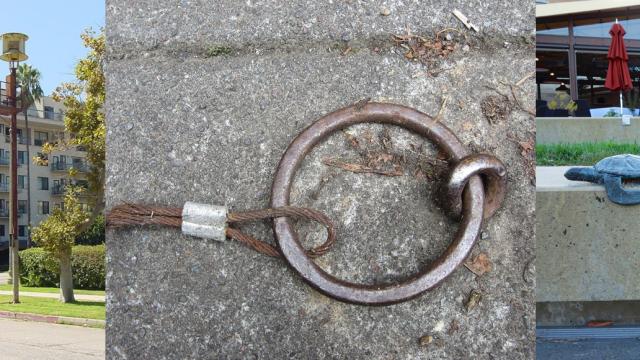There was plenty of outrage earlier this month when a London storefront revealed footpath spikes meant to keep the homeless from getting too cosy. While these shiny prickles did seem especially Temple of Doom-ish, they weren’t all that unusual: there are plenty of little details designed into our cities that tell us what to do, where to go and give us hints of what came before.
While the intentions of some details, like footpath spikes, are inherently obvious, not all these civic designs are always so blunt. Some infrastructural elements have to be purposely disguised, so we, the public, will not mess with them. Others try to nudge us towards a certain behavioural pattern using not-so-subtle hints that supposedly won’t ruin a spot’s overall aesthetics. And other features are simply artifacts of a different time and place, which have not yet managed to be erased.
Here are some infrastructural cues you might have seen on your local streets, and what they’re trying to tell you.
Don’t Sleep Here
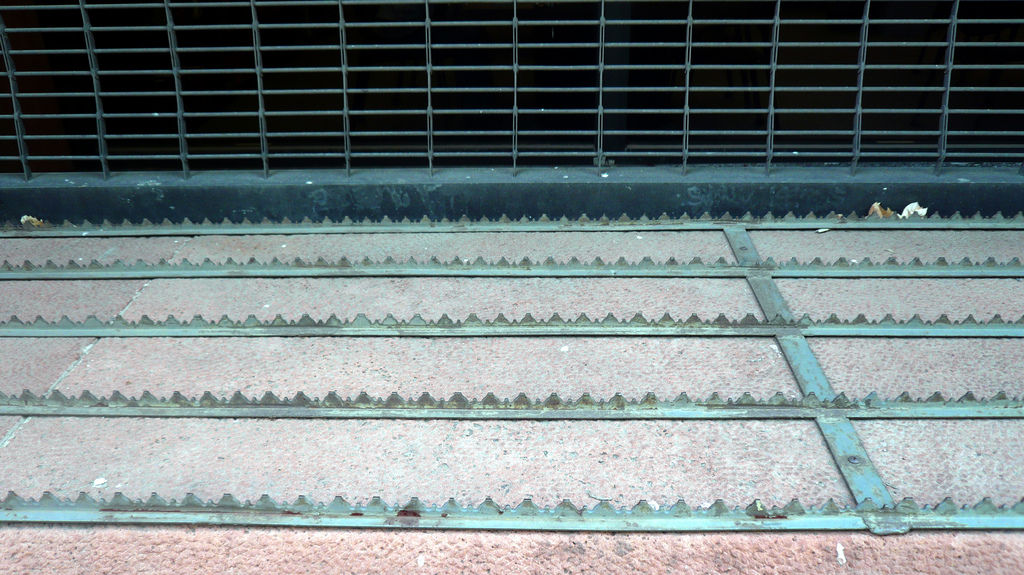
Picture: gruntzooki
The London spikes in question were actually removed after an online petition went viral, but there are plenty of other completely accepted ways that cities prevent sleeping in public spaces. You’ve definitely seen the creative fences and decorative railings that ring windows and ledges with welcoming studs and teeth. The example above is in Manhattan.
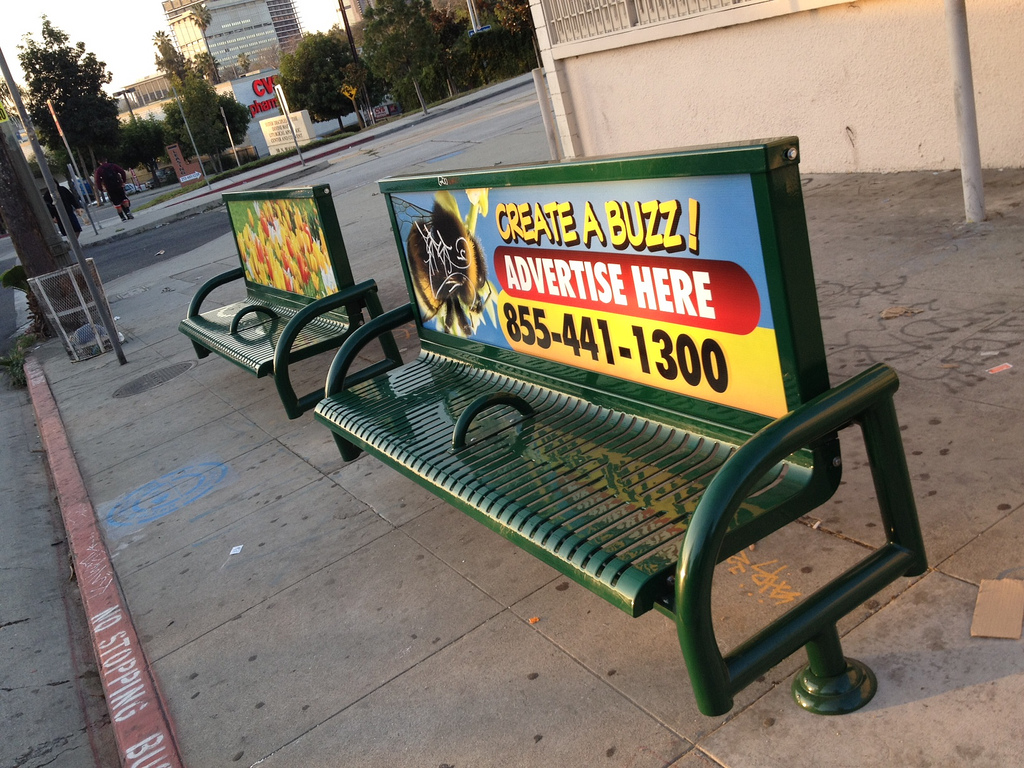
Picture: Alissa Walker
Even on bus benches, which are supposed to be comfortable, those little humps mid-bench are there to make sure you don’t get too comfortable. Benches are also purposely designed from slippery materials or with a steep incline so one has to work to remain upright. Nice, huh?
Utility Lines Below
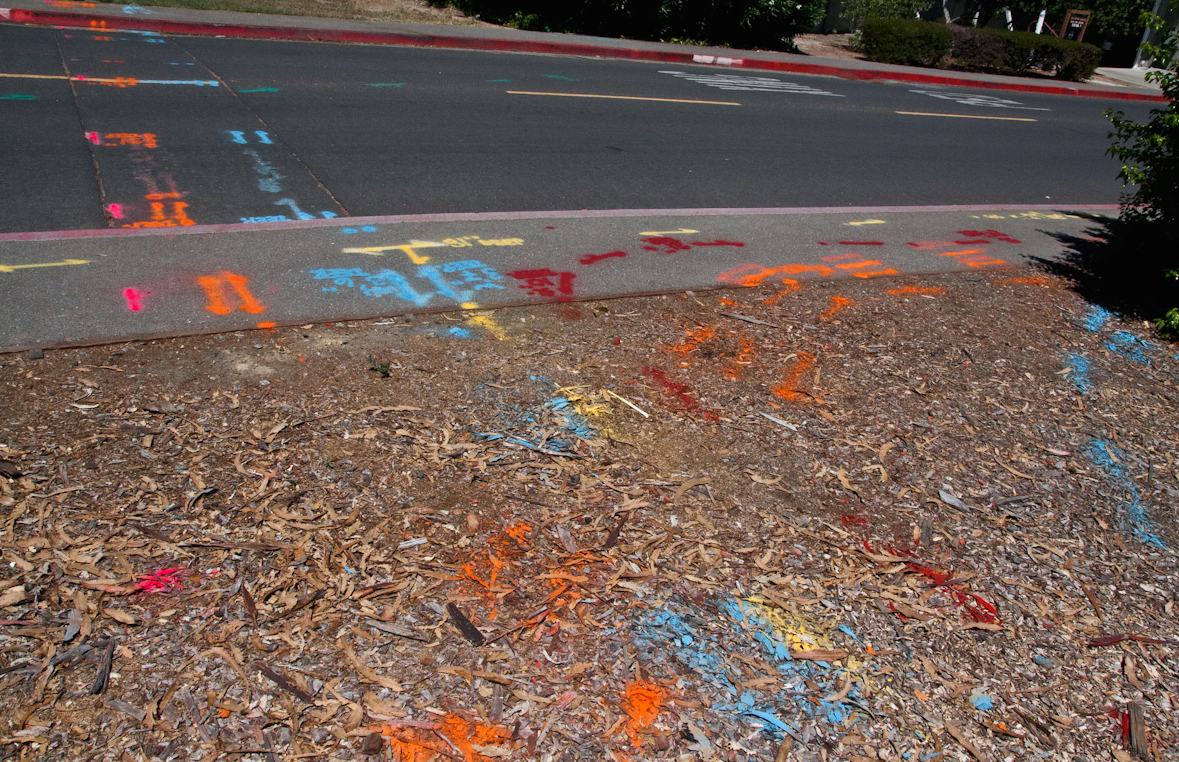
Picture: Stanford
Those too-orderly graffiti tags scattered across the street and sidewalk are actually very specific markings from public works departments and utility companies. An excellent explainer over at Smithsonian Magazine tells the story of these civic hieroglyphics: the system, which is called DigAlert, was created by American Public Works Association after construction workers accidentally cut through a petroleum pipeline in 1976, causing a fatal explosion.
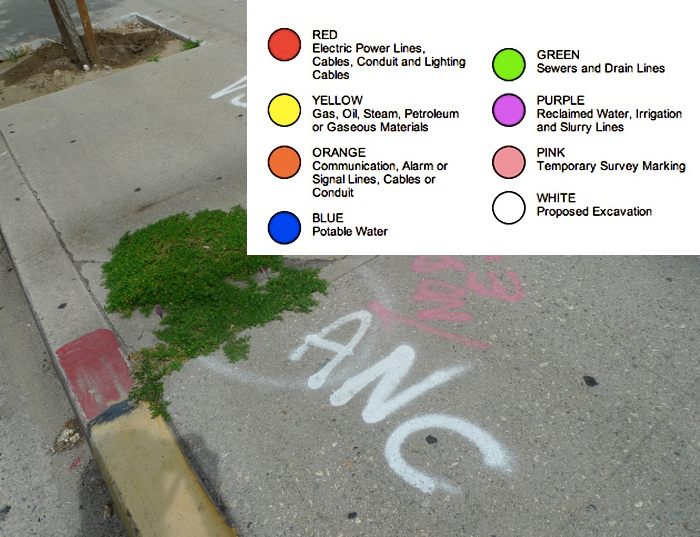
Picture: Alissa Walker
There’s even a handy chart to help learn which colours translate to which utility lines. In addition to the colours, the rules dictate that certain lines, arrows and shapes are used to show how the utilities are moving through the ground.
No Skating
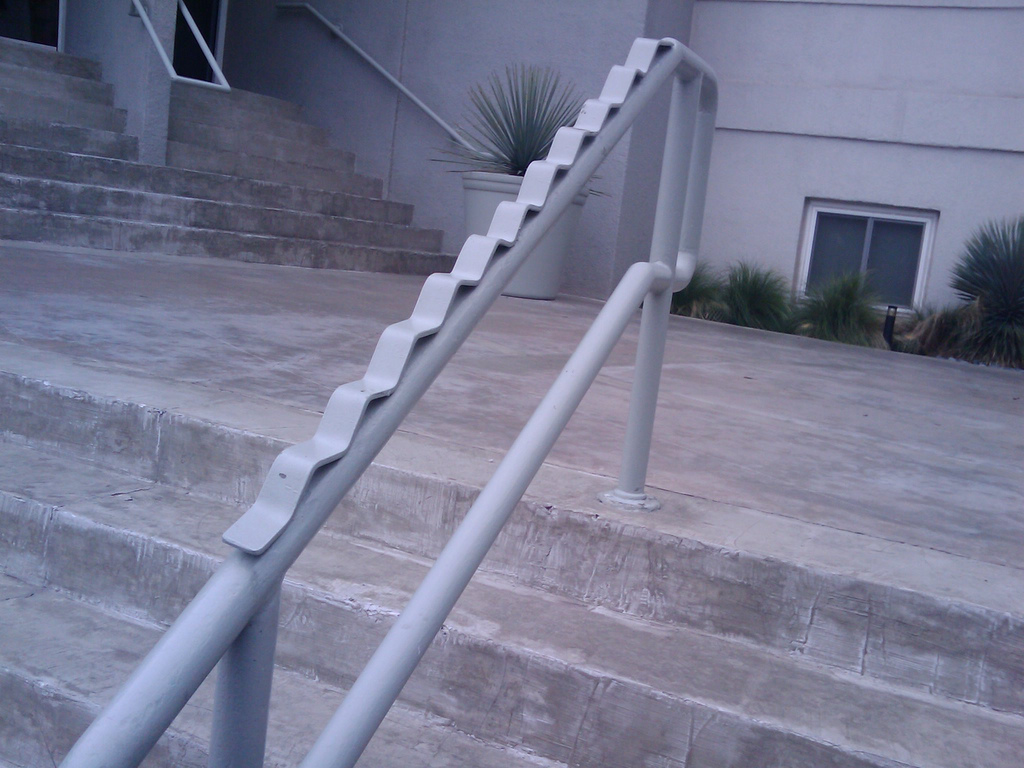
Picture: Liz Henry
Perhaps the most famous (or infamous) infrastructural modifications in cities are the bolts and notches applied to railings and benches to prevent skaters from grinding down the sides of them.
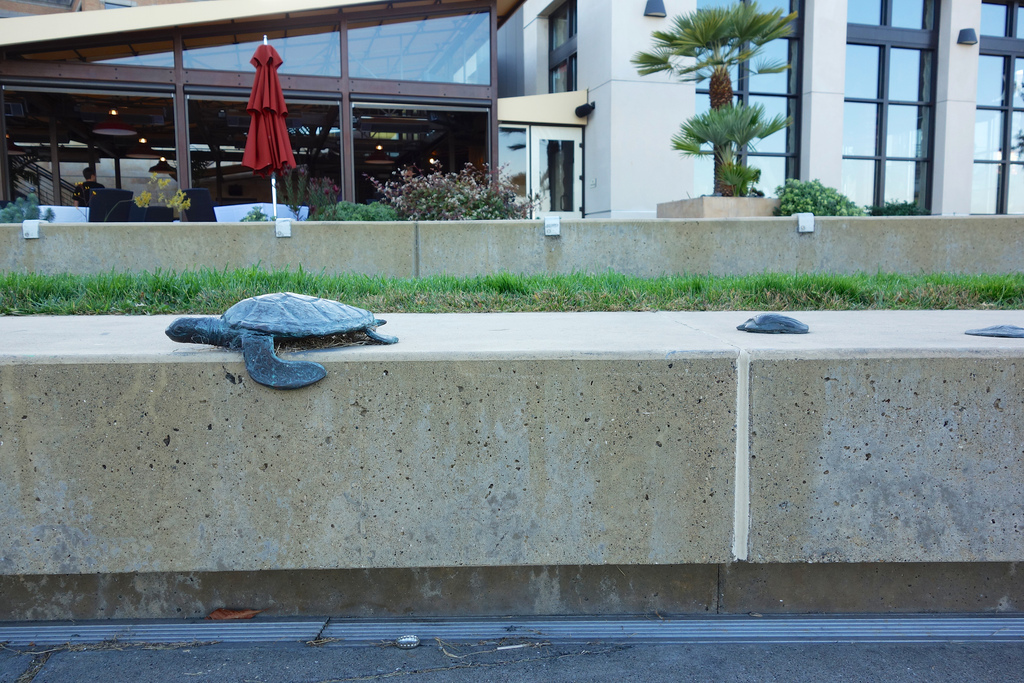
Picture: nicolasnova
Some are just ugly, but others, like these turtles, which just HAPPEN to be crawling along the top of this bench, are quite creative. Photographer Marc Vallée has been beautifully documenting some of the worst offenders in the UK and beyond.
This Footpath Is Old
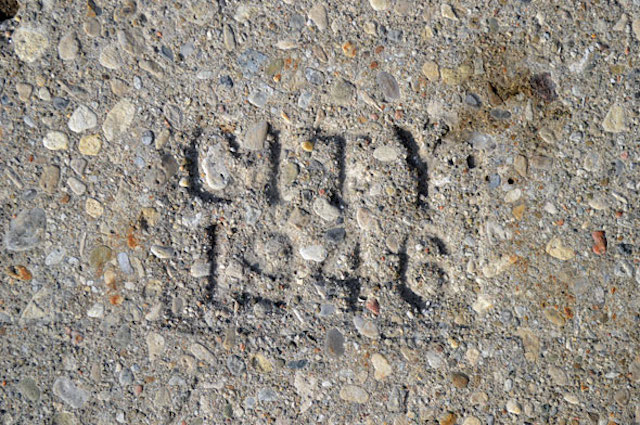
Picture: blogTO
Footpath maintenance is the bane of many cities’ existence — with tens of thousands of kilometres to monitor, it’s no wonder many public works departments farm out the business to private companies. So many cities began requiring private contractors to stamp their work with their name and date as a way to check quality but also keep tabs on which footpaths needed to be repaired or replaced.
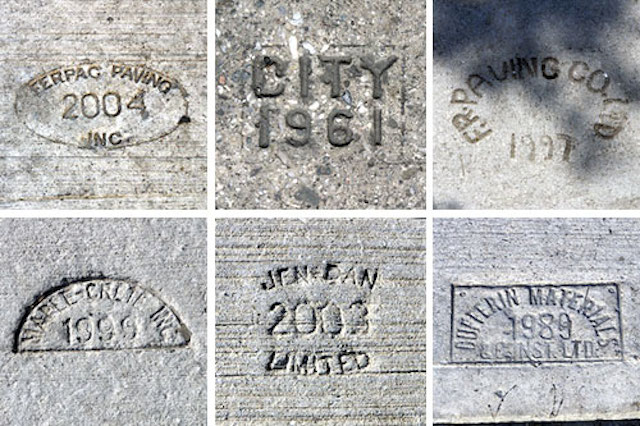
Picture: Torontoist
Toronto has an especially interesting — and artful — collection of sidewalk stamps that date back to the early 20th century, and other cities have both contractor and inspector stamps. The practice is still used currently in many cities, so 100 years from now people might be admiring the age of a 2014 stamp. Or will we even have footpaths then?
No Pigeons Allowed
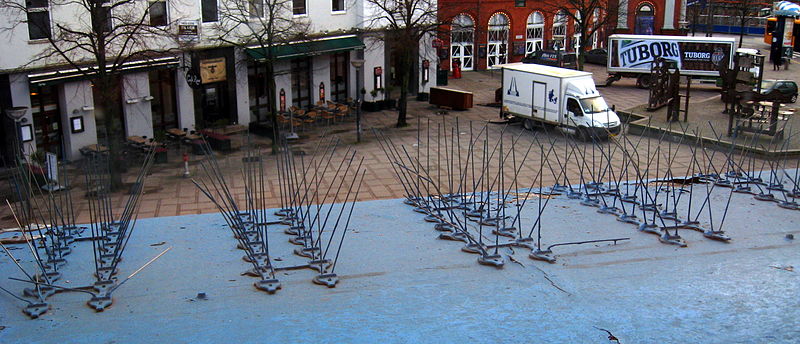
Picture: Tomasz Sienicki
Along the same lines as the anti-sleeping spikes, these thin spiny spokes in high-up places are meant to discourage larger birds from roosting — which helps to prevent nests from forming, yes, but also helps nearby human residents avoid noise and lots of shit below.

Picture: Luigi Chiesa
Found all over the world in different variables — in Denmark they go by the adorable name of fuglepigge — the spikes are seen as humane because they simply encourage birds to land elsewhere. They’re just not particularly attractive.
Old Basement Underneath

Picture: Glassian
Walking in older neighbourhoods, you might notice tiny glass tiles embedded in the footpath around the entrances to buildings. These are called “vault lights” or “deadlights”, and they were used to flood the basements of older buildings with natural light before the days of electricity.
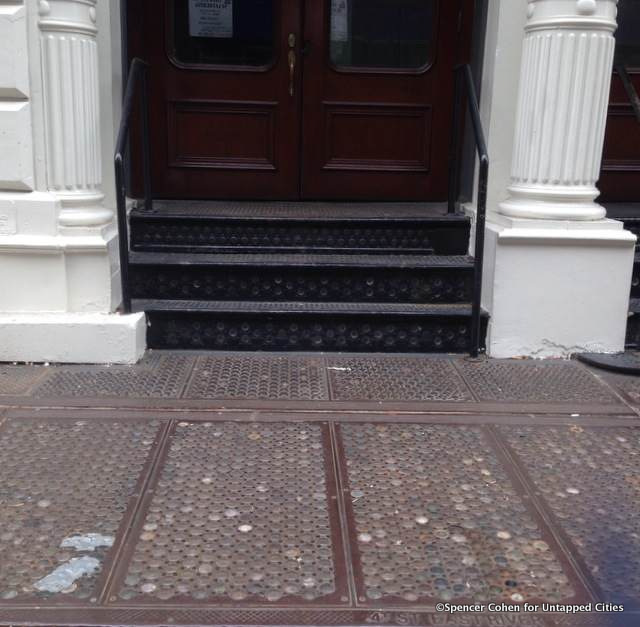
Picture: Spencer Cohen
Untapped Cities has a nice story about the history of these “hollow sidewalks” in New York City. Many have been filled in due to the danger they present (they have been known to cave in) but you can still find plenty of examples throughout the city.
Don’t Jump
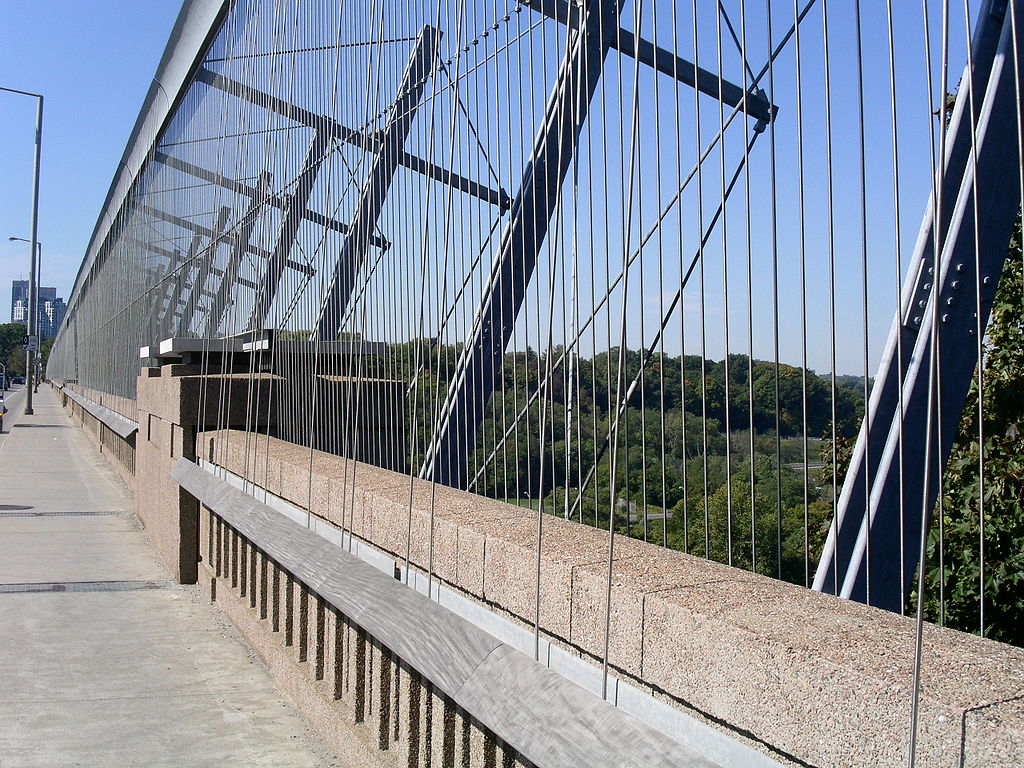
Picture: Geoffreynham
Anti-suicide barriers are becoming more and more common on popular monuments as they have been proven to deter people from jumping off bridges and other tall structures.
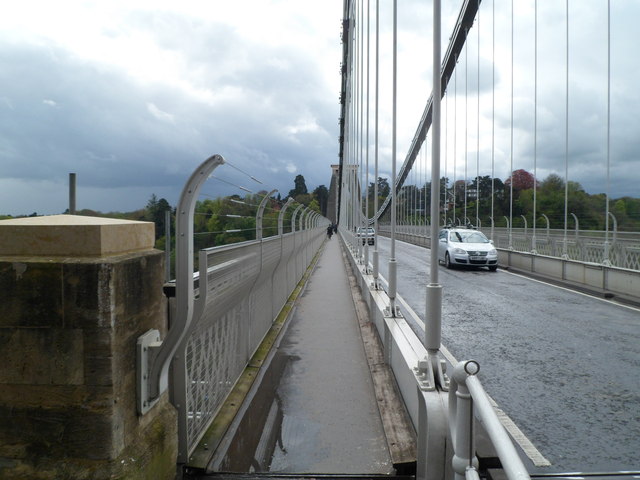
Picture: Jaggery
Most of the newer barriers are a type of net made from thick cables, similar to the one proposed for the Golden Gate Bridge. These are popular, because, unlike a tall railing or fence, they don’t interfere with views.
Horses Used to Be Tethered Here
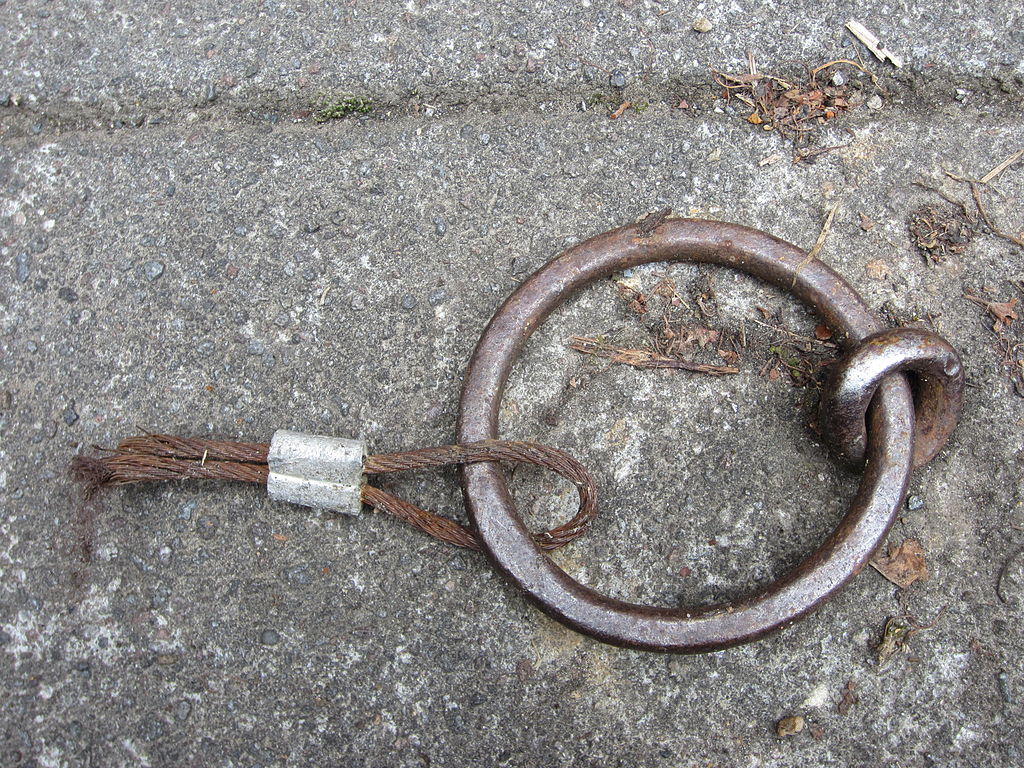
Picture: Another Believer
You’ll have to look very carefully for these tiny rings bolted to the footpath in older urban areas. These are horse rings, back from the days when people needed a place to tie up their horses and horse-drawn carriages. Think of these as pre-car parking spaces.

Picture: gwen
Many cities have pulled out the rings as part of standard footpath upgrades. In Portland, artists began tethering toy horses to the rings to bring attention to them.
Oil Is Below
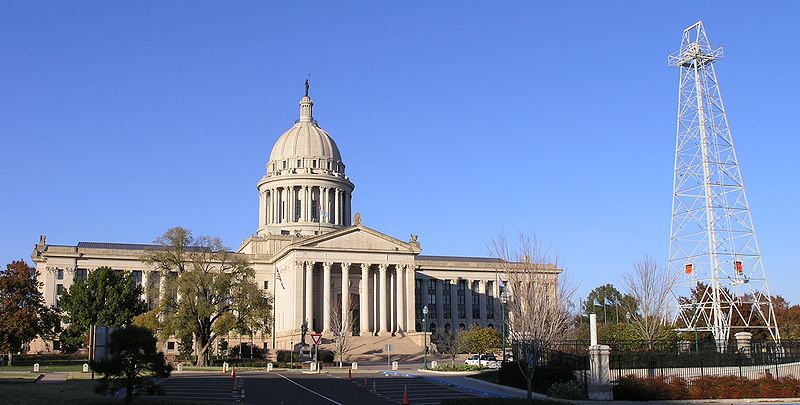
Picture: Daniel Mayer
In many cities the encroachment of urbanisation has not stifled the fact that plentiful oil must be extracted from the ground. In many places where oil production was high, the streets used to be covered in derricks hoping to suck the black gold from below. Oklahoma City, home of one of the largest petroleum reserves in the world, has a derrick right there in the front yard of the capitol.

Picture: Oil of LA
Other cities work to disguise the derricks as decorative buildings or structures. Oil of LA is a lovely documentary that tracks the bizarre structures around Los Angeles used to hide oil derricks, like one on the campus of Beverly Hills High School.
The Cold War Was Here
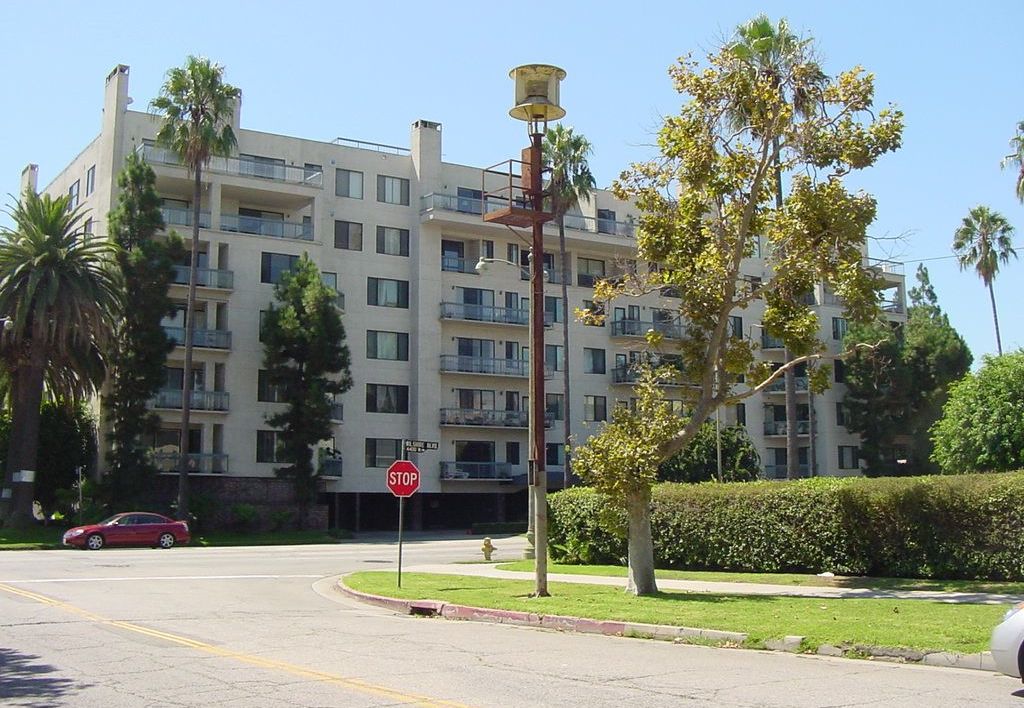
Picture: Dennis’ Map of Sirens
Air raid sirens (officially known as civil defence sirens) left over from both World War II and the Cold War are still found in many cities around the world. These alert systems were built to warn residents in the event of an imminent bombing and, later, a nuclear attack.
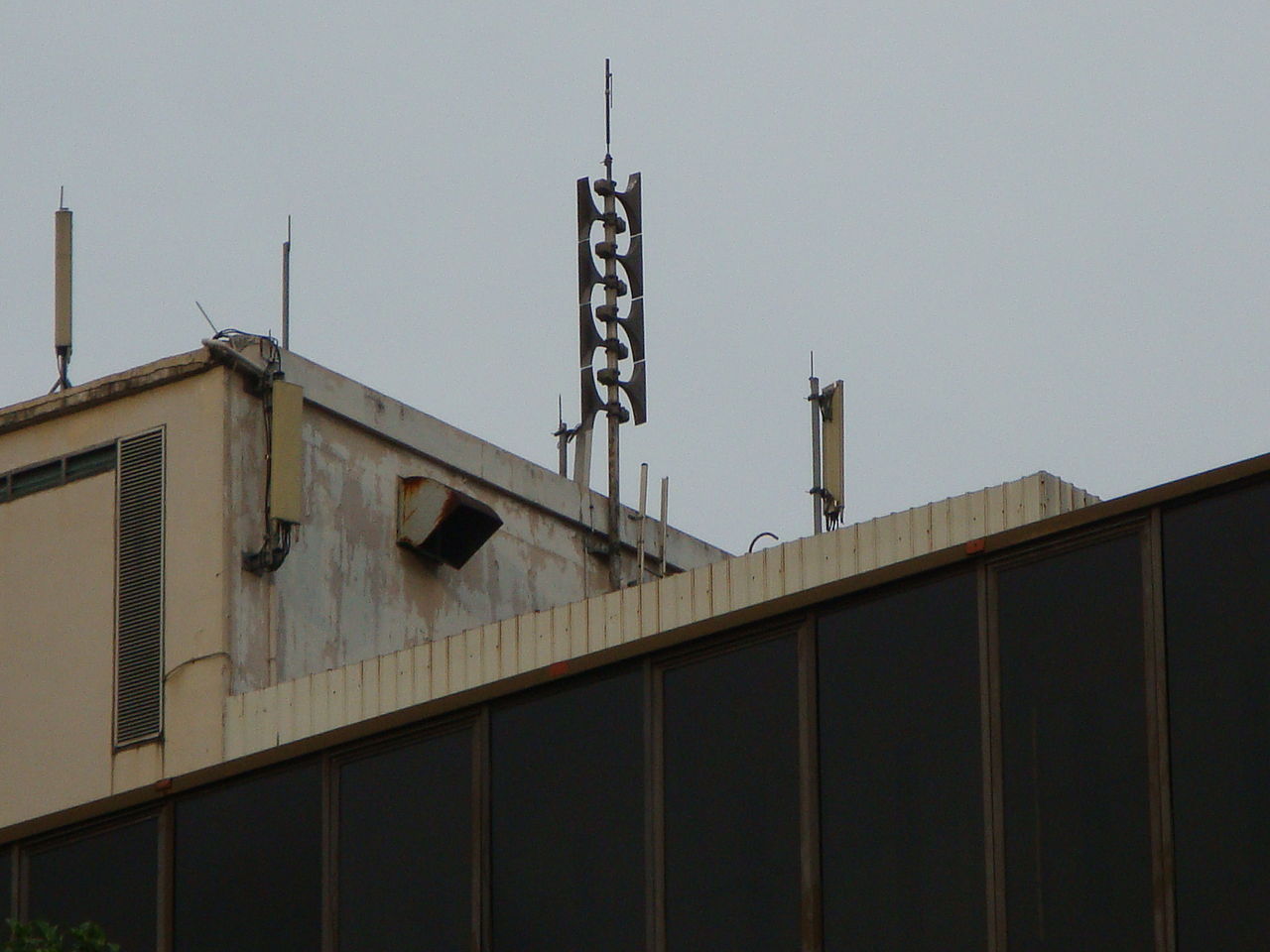
Picture: Kyrios320
While some have been repurposed as tornado or tsunami sirens — and in other places, the sirens are still sadly used as warnings for missiles or other attacks — many of the stations have fallen into disrepair over the years.
